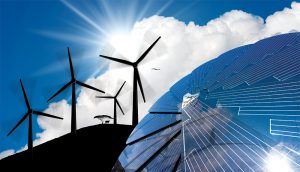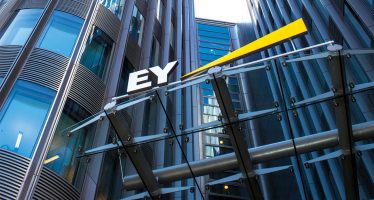Hydropower and its Prospects
 Alternative energy sources, and hydro in particular: CFI.co interviews Wolfgang Kröpfl, CEO of enso GmbH, Gilbert Frizberg, CEO of eHydro500 GmbH, and Günther Rabensteiner, CTO of eHydro500 GmbH.
Alternative energy sources, and hydro in particular: CFI.co interviews Wolfgang Kröpfl, CEO of enso GmbH, Gilbert Frizberg, CEO of eHydro500 GmbH, and Günther Rabensteiner, CTO of eHydro500 GmbH.
Mr Kröpfl, how has hydropower developed as an asset class for investors?
Wolfgang Kröpfl: The years after the financial crisis, and especially in the phases of the “Energiewende”, were characterised by low electricity prices. Due to the highly subsidised energy transition, massive capacity was fed into the European market at zero cost. Since the old subsidy regime expired, the markets have been showing a price recovery for some time. That has collapsed again in the short-term due to the Covid-19 pandemic.
The electricity futures point to a clear recovery. Hydropower is economically competitive without subsidies, and with a lifespan of over 80 to 100 years, it is a stable and sustainable — a real asset.
The development and the prospects have induced enso GmbH, with partners, to found eHydro500 GmbH, which acts as the exclusive investment advisor to the NIXDORF Climate Endowment Hydropower Fund, which was set up in Luxembourg. With this impact investment, investors are offered an evergreen fund for long-term investments in this asset class.
What role does hydropower play?
Gilbert Frizberg: Hydropower contributes 16.4% of global electricity production, and is therefore a mainstay. With a share of 62%, it is the undisputed number one among renewable electricity sources. The marginal costs of hydropower plants are almost zero; that, combined with a life cycle of over 80 to 100 years, makes investing in hydropower attractive. Hydropower has the lowest electricity production costs (LCOE) among renewable energy sources and, along with water storage, also offers the cheapest option for energy storage. Hydropower also has by far the highest efficiency of all power sources.
What do the Paris Agreement and the European Green Deal mean for hydropower?
WK: The Paris Agreement’s goal of keeping global warming below 2°C is an essential step towards securing the future. We are directly confronted with long-term changes in environmental conditions, and we notice them in our records of relevant parameters. The steps that are taken with a Green Deal are imperative. In this context, hydropower — as the oldest and most established renewable electricity source — plays a significant role in the transformation of electricity production. After the fossil and nuclear power plants have been shut down, a replacement is needed to offer a stable supply even in “dark times” (no wind and no sun).
What does this mean for the future energy landscape?
GF: The World Energy Outlook 2019 of the IEA (International Energy Agency) predicts that by 2040 electricity will have overtaken fossil fuels in importance. This means an increase to some 160% by 2040. This is driven on the one hand by the need for replacement capacity from previously fossil-fuel power plants, and on the other by the increasing consumption of increasing electrification (e-mobility, automation and technological change such as IoT and 5G).
IRENA studies from 2020 show that in order to achieve the 2050 goals of decarbonisation, hydropower with an additional capacity increase of 850 GW worldwide is necessary.
What are the technological advantages of hydropower?
Günther Rabensteiner: Hydropower is technology that is economically capable of supplying a base load and, in connection with water storage, can react flexibly to requirements. Water storage is by far the cheapest form of energy storage in the long run.
The good predictability and relative steadiness of the water flow make hydropower a renewable source of electricity that can be easily planned. The production profiles of solar and wind have a low statistical correlation with hydropower, which means that the technologies complement each other.
Hydropower is black-start capable, which means that even in a blackout scenario, it can be used to restart the electricity grid.
Who invests in hydropower?
GF: Hydropower is a suitable asset class for long-term investors because of its lengevity. Past and current crises have clearly shown that hydropower is part of the infrastructure that is relevant to the system. The aim of the fund is to offer institutional and professional investors a stable long-term investment. Hydropower does not lose value over its service life and has a constant production profile that does not decrease in efficiency. From the current perspective, the product electricity cannot be substituted and can be sold and traded internationally via the networked markets, regardless of location.
What are you aiming for with your new Climate Endowment Hydropower Fund initiative?
WK: The fund strives for an initial target of €500m in AUM. The structure as an evergreen fund leaves room for future expansion. It is important that we achieve a dual goal with the investments: a positive impact and climate sustainability as well as a sustainable stable financial return for investors.
What are the criteria for the investments?
GR: In addition to economic factors, complexity and sustainability in the social and environmental context must be considered.
We base our actions on the UN-ESG goals. We focus on investments in hydropower plants up to 50 MW. With a balanced mix of plants in operation that need upgrading and refurbishment (brownfields) and hydropower plants yet to be built (greenfields), we create cash flows and additional production from the start.
In the first phase of the fund, investments will focus on the target region of Europe. A balanced diversification of northern, southern and eastern Europe ensures the balance of the hydrological and macro-economic situation. Seasonal and annual fluctuations in the total production of the portfolio can be balanced out. Regions outside of Europe such as Asia can later be added.
We focus on power plants where we, as asset managers, can bring additional value. This happens through our experience in evaluating potentials in the course of the acquisition process, and through our optimisation know-how in refurbishment.
What are the challenges?
WK: The main challenges are to be seen in the uniqueness of each hydropower investment, as well as our claim to optimal implementation in the overall context of our impact goals. This includes technical and social, environmental and economic competence.
In addition to the experience from the operation of 35 hydropower plants that are currently under our management, we rely on innovative solutions in order to be optimally prepared for the challenges of future paradigm shifts in the industry. Storage and the use of complementary technologies at existing locations are just two examples.
With Günther Rabensteiner, long-time technical director of the Austrian Verbund AG (second-largest hydropower operator in Europe) and Gilbert Frizberg, long-time chairman of the supervisory board of the Austrian Verbund AG, we have been able to gain market access and transaction competence on an international level, as well as enormous energy market know-how.
Clean Power
eHydro500 GmbH, a subsidiary of fund manager enso GmbH, offers investment opportunities into the most efficient renewable energy: hydropower.
Climate change is an undeniable fact, and the protective measures taken by the EU with the Green Deal are inevitable. Efforts towards significant CO2 reduction must be improved to keep track on the 2° global warming target.
The use of fossil fuels must be drastically reduced. In addition to increasing energy efficiency, this can only be achieved through increasing electrification and replacement of fossil power plants by power plants with renewable energies are implemented.
Hydropower has a significant role to play in this future, as it is predictable, controllable and can store energy by water storage volumes.
Recently published studies show that significant increase in hydropower capacities will be required to build up a sustainable mix of renewable power sources for a stable supply of clean electricity. In this context, the International Renewable Energy Agency (IRENA) predicts an additional demand of 850 GW in installed hydropower capacity including pump storage hydropower plants over coming decades — an average annual growth of two percent.
The future is without any doubt electric and hydropower is a vital pillar in the future of electricity supply and in the transition to the 2050 goal for decarbonisation and the limitation of global temperature increases as laid-out in the Paris Agreement of 2015.
- Hydropower has a lifetime of up to 100 years
- Hydropower creates only 1/100 of emissions per kWh compared to the actual European energy mix.
- Hydropower has marginal costs near zero and low LCOEs.
- Hydropower can store energy by water storage
This makes hydropower an attractive asset class for long-term investment.
Asset Management
enso GmbH is an established asset manager, with 35 hydropower plants under management in Norway, Austria, Albania and Turkey; enso also provides this service for independent third-party power plant owners. To extend its business lead, enso GmbH founded eHydro500 GmbH with partners outside of the industry.
In October, eHydro500 GmbH and its partner, Climate Endowment Group, launched the green Climate Endowment Hydropower Fund in Luxembourg as an investment opportunity. It pledged to invest €500m in equity into a balanced and sustainable mix of greenfield and brownfield hydropower plants in Europe.
The fund follows dual targets: positive impacts for climate sustainability and stable profitability for investors.
eHydro500 — as exclusive investment advisor to the fund — is dedicated across the organisation to the UN’s SDG goals and follows the strict rules of IFC performance standard (World Bank).
Low-complexity hydropower plants with a capacity of up to 50 MW are in focus. For such plants, the impact on the environment can be kept to a minimum.
With a 60-40 mix of Brownfields (plants already in production) and Greenfields (newly built plants), a balanced risk profile and steady cash flow can be achieved. Production from these upgraded and new plants will provide additional energy to the market and reduce the CO2 footprint in Europe.
The portfolio creates just 1/100 of CO2 emissions per kWh compared to the current energy mix of Europe. DNSH – Do No Significant Harm — tests, plus impact and sustainability indicators, are the basis for all investment decisions.
With the expertise of the management team, hidden potentials can be detected during evaluation, and lifted by refurbishment, upgrade activities or operation optimisation.
Targeting storage capabilities helps to improve the utilisation of available waterflow and regulate production by shifting production from daily to seasonal periods results.
Investment Regions
Hydropower plants generate electricity from the volume of available waterflow and pressure, due to a difference in altitude between water intake and powerhouse. Mountainous regions usually provide ideal conditions, with altitude and plentiful rainfall where warm and moist air currents meet. This determines the target regions of the fund: Scandinavia’s alpine regions, southern and south-eastern Europe.
The geographically diverse asset allocation results in a balanced risk at portfolio level. Even though hydropower is a predictable energy source, the annual water supply differs around Europe. Due to periodic weather phenomena, these fluctuations are not evenly distributed regionally.
Experience
enso GmbH has extensive experience in the investment lifecycle. It managed to combine the professional experience gained at 35 plants under management in four regions with the know-how of European Utilities managers in the offshoot company eHydro500 GmbH. eHydro500 bundles specialist knowledge gathered over three decades as Europe’s second-largest hydropower power producer and utility with 10 years of experience in managing an institutional fund.
Günther Rabensteiner is a former member of the board, CTO and COO at Austrian Verbund AG; Gilbert Frizberg is a 15-year veteran of the supervisory board at Verbund AG. The men share their global network and experience on eHydro500 GmbH’s managing board.
Within the Climate Endowment Group partnership is an interdisciplinary team of capital market experts, taking care of the risk management, ESG-related issues and impact evaluation in the fund´s portfolio management.
Pipeline
The current market environment is an attractive entry point as many smaller asset owners face a liquidity problems due to the combined impact of low electricity prices and the global recession caused by Covid-19.
Historically low electricity prices during Covid-19 in Scandinavia have led to a liquidity crunch among some asset owners. Global GDP contraction due to Covid-19 has worsened the liquidity crisis and provides an opportunity to acquire quality assets that were not previously available.
Market screening activities led to an identified pipeline of possible investment targets of a total installed capacity of about 550 MW in Scandinavia, south and south-eastern Europe. Deal speed has improved recently, and about a third of the pipeline should be available within six months.
You may have an interest in also reading…
Pavilion Global Markets Ltd. – Transition Management and the Pandemic: When to Act in Periods of Higher Market Volatility
While it’s understandable to be squeamish about transitioning assets during periods of high volatility, it can be an ideal environment
General Mediterranean Holding: More Titles and Honours Than Your Average Captain of Industry
Founder and chairman of General Mediterranean Holding (GMH), Sir Nadhmi Auchi, began his career with the Iraqi Ministry of Oil
EY Germany: Champion in Professional Services
When a company with over 10,000 employees is soon celebrating its 100th birthday, it doesn’t really run the risk of


















































































